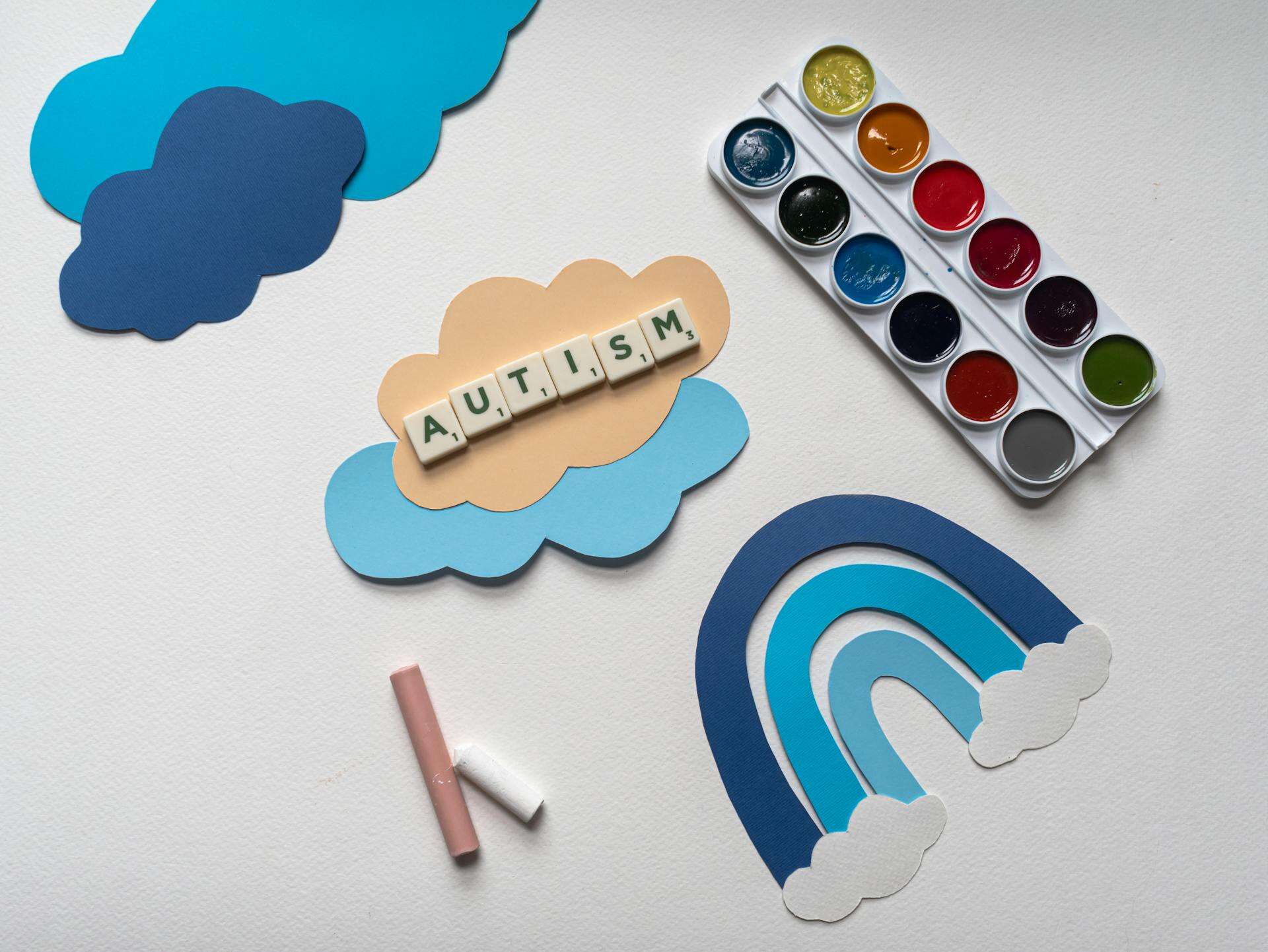
Which Therapies Can Help with Autism
Autism spectrum disorder (ASD) is a neurodevelopmental condition that affects how individuals perceive the world and interact with others. Though autism is not something to be “cured,” various therapy approaches have shown success in helping autistic individuals develop communication, social, and behavioural skills, manage challenges, and lead fulfilling lives. Among these, Cognitive Behavioural Therapy (CBT), Acceptance and Commitment Therapy (ACT), and Art Therapy have shown significant promise.
In this blog, we explore how these therapeutic interventions support individuals with autism spectrum disorders and their unique needs.

Source: Photo by Polina
Can Autism Be Treated with Therapy?
While autism is a lifelong condition, therapy can play a crucial role in supporting and in improving the quality of life for individuals on the spectrum. The goal of therapy is not to change the person but to support them in navigating challenges related to communication, emotional regulation, sensory processing, and social interactions.
A range of therapies—from occupational therapy to speech therapy and psychological approaches—form the foundation of support for children and adults with ASD (autism spectrum disorder). Early intervention is especially impactful in equipping children with autism with essential skills to thrive.
Do Autistic People Struggle with Therapy?
Therapy experiences vary greatly among autistic individuals. Some may find traditional therapy models difficult due to communication challenges or sensory sensitivities. This is why therapy should always be tailored to the individual’s needs, preferences, and strengths.
Therapists with a neuro-affirming approach, who understand autism beyond diagnostic criteria, are often better positioned to create a safe, effective therapeutic environment. Flexibility, use of visuals, clear structure, and respect for sensory needs are key considerations.
CBT and ACT: How Cognitive-Based Therapies Help with Autism
Cognitive Behavioural Therapy and Autism
Cognitive Behavioural Therapy (CBT) is a structured, goal-oriented therapy that helps individuals identify and change unhelpful thought patterns and behaviours. While initially designed for neurotypical populations, it has been adapted to suit the needs of people on the autism spectrum.
CBT is most effective in addressing anxiety, obsessive behaviours, and emotional regulation challenges common in autistic individuals. For example, CBT can support an autistic child in recognising social triggers and developing coping strategies to manage them.
However, CBT may not be ideal for every autistic person—particularly those with significant language or cognitive impairments. In such cases, other modalities may offer more effective support.
Acceptance and Commitment Therapy (ACT)
ACT is another cognitive-based approach gaining traction in autism and therapy. It focuses on increasing psychological flexibility by helping individuals accept difficult thoughts and emotions rather than fighting them. Through mindfulness, values exploration, and committed action, ACT supports autistic individuals in living a life aligned with their personal goals.
ACT is particularly beneficial for autistic adolescents and adults dealing with anxiety, depression, or identity struggles. Unlike traditional CBT, ACT places less emphasis on altering thoughts and more on accepting them, making it more accessible for individuals who find abstract thinking challenging.
Art Therapy and Autism: A Creative Pathway
How Does Art Therapy Help with Autism?
Art therapy provides a non-verbal outlet for self-expression and communication, which can be especially helpful for autistic individuals who find spoken language overwhelming. Engaging with art materials—like paint, clay, or collage—can help improve sensory integration, reduce anxiety, and enhance emotional regulation.
Art therapy also strengthens fine motor skills, encourages imaginative play, and offers a safe environment for exploring identity and feelings. For children with autism spectrum disorders, these activities can enhance social communication and self-confidence.
Is Art Therapy Scientifically Proven?
While more large-scale studies are needed, existing art therapy and autism research supports its efficacy. The evidence suggests that art therapy can reduce anxiety, increase social interaction, and support emotional expression in autistic individuals.
Consensus-Based Elements of Art Therapy with Children within the Autism Spectrum
There are several key components commonly agreed upon in art therapy approaches for children with autism spectrum:
- A structured yet flexible environment
- Consistent routines
- Visual supports and clear instructions
- Use of preferred art materials
- Therapist attunement to sensory sensitivities
These consensus-based elements are essential for building trust and engagement with children with autism spectrum disorders.
Art Therapy and Autism Overview and Recommendations
In summary, art therapy should be considered a valuable addition to a holistic intervention plan. It complements cognitive therapies like CBT and ACT by offering an experiential, sensory-rich pathway to healing and growth.
ABA vs CBT: Which is Better for Autism?
Applied Behaviour Analysis (ABA) has long been one of the most commonly used behavioural interventions for autism. It focuses on reinforcing desirable behaviours and reducing problematic ones through structured repetition and rewards.
However, ABA has drawn criticism for being overly rigid and for not always respecting the autistic individual’s autonomy. In contrast, CBT (especially when adapted) and ACT promote emotional awareness, self-advocacy, and resilience.
Which approach is “better” depends on the individual. Many professionals are now moving towards integrative models that combine aspects of behavioural, cognitive, and experiential therapies.
What’s the Best Therapy for Autism and ADHD?
There is no one-size-fits-all answer. The most effective therapy is one that is:
- Individualised
- Strengths-based
- Neurodiversity-affirming
- Delivered by professionals with experience in autism spectrum disorders
Whether it’s CBT, ACT, art therapy, occupational therapy, or a mix of approaches, the key is to provide consistent, compassionate, and personalised support.
In cases where autism and ADHD co-occur, therapy must address the challenges associated with both conditions. Behavioural strategies, occupational therapy, and social skills training are commonly used. However, both ACT and CBT can be adapted to target executive functioning deficits, emotional regulation, and attention difficulties.
Mindfulness-based approaches also show promise in managing hyperactivity and impulsivity. A multi-disciplinary, person-centred approach is often the most effective therapy for ADHD and autism.
The Cognitive Approach to Autism: What Does It Mean?
The cognitive approach to autism centres around understanding how autistic individuals process information differently. This includes heightened attention to detail, challenges with central coherence, and difficulties with theory of mind (understanding others’ thoughts and feelings).
CBT and ACT both tap into the cognitive profile of autism by helping individuals become aware of their thought patterns, practice self-regulation, and build emotional insight.
Who is CBT Not Recommended For?
CBT may not be recommended for autistic individuals with significant language impairments, very young children, or those who struggle with abstract thinking. In such cases, therapies like art therapy, play-based intervention, or sensory integration may be more accessible.
Conclusion: Finding the Right Therapy
Autism and therapy intersect in many meaningful ways, from developing social communication skills to improving emotional wellbeing. Whether through cognitive behavioural therapy and autism-informed ACT, or the expressive power of art therapy, individuals on the autism spectrum can benefit immensely from thoughtful, well-matched support.
At Mindkshetra, we understand the importance of creative and cognitive therapies in supporting neurodivergent minds. Click here to learn more about our practitioners and to book a session with them. If you’re exploring therapy options for your child or yourself, you can also contact us to find the approach that best suits your journey.

Written by:
Rupa is a cultural artist, Art Psychotherapist/ Counsellor, Podcaster and founder of Mindkshetra (a social enterprise) with extensive experience working with young people and their families.
More Articles:
